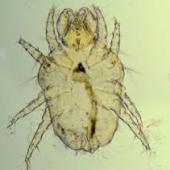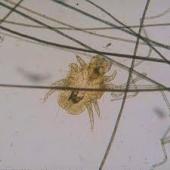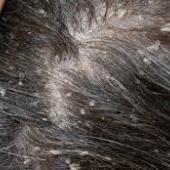Unmasking the Mites: Exploring the Mystery of Walking Dandruff (Cheyletiellosis)

Walking dandruff (Cheyletiellosis)
Mange brought on by a cheyletiella infection is also known as rabbit mites and wandering dandruff. Microscopic parasites that live on the skin's surface cause this irritating skin condition. The mites are found in many animals, including dogs, cats, and rabbits. Pets can infect humans with these mites. Early discovery is essential because the condition is easily treated.

What causes cheyletiellosis?
A tiny mite infestation is the source of the illness. This mite spends its entire life on an animal's fur. The term "walking dandruff" refers to the fact that despite the mites' small size, they can only be seen with a magnifying glass or the naked eye. They may resemble tiny, moving white skin flakes.
The majority of afflicted animals are elderly, young, or ill, and the majority of healthy animals appear to have some immunity to infection. Puppy purchases from pet stores or breeding facilities are where it is most frequently observed. Infection from the mother usually occurs in the first few weeks of life for kittens.Not fresh hay or straw, but other infected people are the source of infection for rabbits.
How would I know if my pet has cheyletiellosis?
Microscopic parasites that live on the skin's surface cause this irritating skin condition. The mites are found in many animals, including dogs, cats, and rabbits. Pets can infect humans with these mites.
Can I catch mites from my pet?
The itchy, red lesions caused by the cheyletiellosis-causing mites can infect humans and pets and can transfer from animal to animal. People usually experience incredibly itchy lesions on their arms, neck, chest, and abdomen. Cats and rabbits are the animals that infect humans more frequently than dogs. If the infection in dogs is under control, lesions on people will heal on their own in a few weeks and no extra treatment is required.
How will my vet know my cat has mites?
Because the mites are plainly visible under a microscope, the condition is reasonably easy to diagnose. When an illness is active, mites and eggs can be found in small samples of skin or hair that are analyzed. The surface of the skin is where the mites eat, and here is also where their eggs are laid.
How can the infection be treated?
Topical drops that kill parasites can also be used to kill mites. This can be prescribed by your veterinarian, who can also advise you on how to use it properly. All animals that regularly interact with an infected person should receive treatment simultaneously because the illness can transmit across animals (even if they are not showing any signs of disease). It could be necessary to provide numerous treatments over a few weeks.
While there is not a product specifically designed to remove mites from materials like carpets and pet beds, an environmental flea spray could be helpful in this area.








